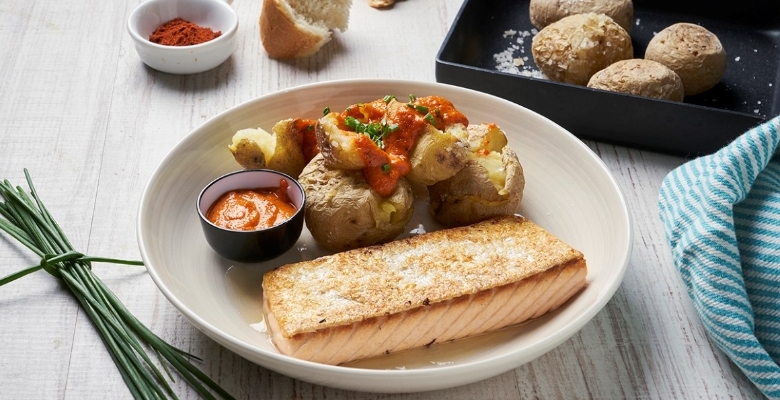Mojo Picón: The Fiery Essence of Canary Islands Cuisine
A Taste of Tradition and Spice
Mojo Picón, a vibrant and flavorful sauce from Spain’s Canary Islands, is an essential part of the region’s culinary heritage. Known for its bold taste and versatility, this sauce has transcended its island origins to captivate food enthusiasts around the world. This article explores the history, ingredients, and culinary applications of Mojo Picón, offering a glimpse into why this sauce is so beloved.
The Rich History of Mojo Picón
The origins of Mojo Picón can be traced back to the Canary Islands The sauce is deeply rooted in the islands’ history and culture, reflecting a blend of influences from colonists and the indigenous people. The word “mojo” is derived from the Portuguese word “molho,” meaning sauce, indicating the historical ties and trade routes that have shaped the islands’ cuisine.
Mojo comes in two primary variations: red or picón and green (mojo verde). The red or picón version is typically made with red peppers, while the green version uses green peppers and herbs. Both sauces are characterized by their robust flavors, though the red variety is usually spicier, thanks to the inclusion of chili peppers.
Ingredients and Preparation
Creating Mojo Picón is a straightforward process, yet it requires fresh, high-quality ingredients to achieve its signature taste. The essential components of red Mojo Picón include dried red peppers (often a combination of sweet and hot varieties), garlic, cumin, paprika, vinegar, olive oil, and salt. Some recipes also call for a splash of wine or a handful of breadcrumbs to thicken the sauce.
To prepare Mojo Picón, the peppers are rehydrated and blended with the other ingredients until smooth. The result is a thick, aromatic sauce with a vibrant red hue. For the green version, fresh coriander or parsley is used instead of dried peppers, creating a milder but equally flavorful sauce.
Culinary Applications: More Than Just a Sauce
Mojo Picón is a versatile condiment that enhances a wide range of dishes. Traditionally, it is served with “papas arrugadas” (wrinkled potatoes), a beloved Canary Islands dish made by boiling small, salt-crusted potatoes until tender. The salty potatoes, paired with the spicy, tangy Mojo Picón, create a harmonious balance of flavors that is quintessentially Canarian.
Beyond potatoes, Mojo Picón is used as a marinade for meats, a dressing for salads, and a dip for bread. It can also elevate seafood dishes, such as grilled fish or octopus, adding a burst of flavor that complements the natural sweetness of the seafood. In modern culinary contexts, chefs around the world have embraced Mojo Picón, incorporating it into fusion dishes and creative recipes that highlight its bold character.
Mojo Picón in Global Cuisine
The appeal of Mojo Picón extends far beyond the Canary Islands. Its rich flavor profile and simple preparation have made it a favorite among home cooks and professional chefs alike. In Spanish restaurants worldwide, Mojo Picón often features as a staple sauce, bringing a touch of Canary Islands tradition to diverse menus.
Food enthusiasts have also begun to experiment with Mojo Picón in non-traditional ways. From drizzling it over roasted vegetables to using it as a spicy base for pizza, the sauce’s adaptability knows no bounds. Its ability to enhance both humble and sophisticated dishes speaks to its enduring popularity and culinary significance.
In conclusion, Mojo Picón is more than just a sauce; it is a symbol of the Canary Islands’ rich culinary heritage and a testament to the power of simple, high-quality ingredients. Whether enjoyed in its traditional context or as part of innovative recipes, Mojo Picón continues to delight and inspire food lovers around the world.
If you are interested in our products, please fill out the following form.

